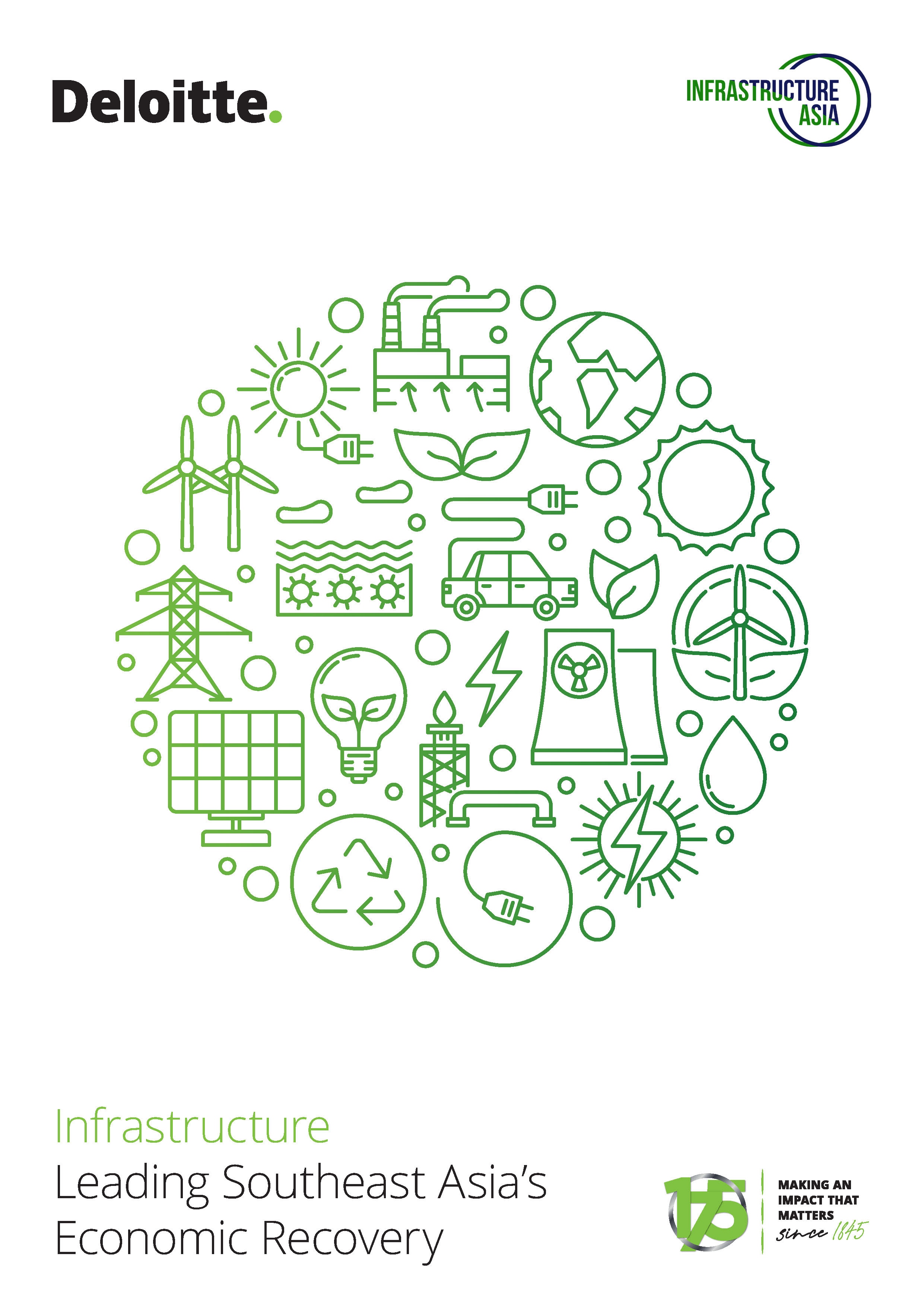Perspectives

Infrastructure
Leading Southeast Asia’s Economic Recovery
The plan for a robust economic recovery from the COVID-19 pandemic and for a more sustainable and resilient future must include investment in infrastructure.”
Infrastructure development to lead the economic recovery from COVID-19
This thought leadership was done in cooperation with Infrastructure Asia.
The COVID-19 pandemic has necessitated the immediate and significant public health and economic policy responses centred on addressing the human impacts of the health crisis. Yet, measures aimed to slow the spread of the virus have led to unprecedented declines in economic activity.
According to the World Bank, the global recession caused by the pandemic is the deepest since World War II, and the Asian Development Bank is expecting economies across developing Asia to contract in 2020, for the first time in nearly 60 years.
Achieving high quality infrastructure development can positively impact economic output via higher construction activity and increased employment in the short-term. As such, some governments have already increased their infrastructure spending to stimulate their economies. Recently, the International Monetary Fund found that countries waste about one third of their infrastructure spending due to inefficiencies. Governments need strong frameworks to plan, allocate, and implement quality public infrastructure. At the same time, the pandemic has revealed new vulnerabilities, highlighting that even countries with significant economic infrastructure were not sufficiently resilient to the ripple effects of such economic disruptions.
Against this background, we consider the role of developing high quality infrastructure in leading the recovery from COVID-19 in three phases:
1. Respond: Minimise immediate disruptions from the impact of COVID-19 by filling urgent infrastructure gaps
We have seen the urgent responses many countries have implemented during the Respond phase. Governments have identified and sought to fill urgent infrastructure gaps in healthcare, telecommunications, and logistics. However, much more needs to be done in the region to address issues in accessing basic services, such as education, water and sanitation.
The private sector also has a key role to play in addressing the significant crisis-induced disruption to the supply-side. Their value add would be to bring their innovation and ideas to infrastructure delivery and operations.
2. Recover: Accelerate “shovel-ready” projects to drive higher economic activity
While there is a strong case for spending on infrastructure development to stimulate economic recovery, materialising it can be challenging due to lengthy lead times. Instead of large, new and eye-catching projects, the initial focus of expenditure should start with existing assets or those already in the pipeline. The immediate target should be areas that can be quickly deployed with minimal risk. Priority should also be given to maintenance and upgrades to existing infrastructure and asset recycling.
However, the need for urgency should not override the need for due diligence. The message to governments is: “plan a pipeline now so increased spending can flow when needed in the period ahead”.
3. Thrive: Prepare economies for future shocks and position them for sustainability
As we take steps to stabilise and redesign our economies, we can also reduce the impact of future economic shocks by ensuring upcoming economic recovery initiatives embrace a sustainable and resilient future.
While economic recovery will be at the forefront of public policy, governments need to weigh other priorities in the delivery of infrastructure. It is important that investments are guided by sound principles around project prioritisation, funding, market design and delivery. This means significant preparatory work needs to start now.
Sustainable financing for green and resilient infrastructure
With less fiscal space available due to necessary spending on the crisis response, it will be important to explore alternative sources of funding for future infrastructure projects. Sustainable financing as a source of funds for corporates and project owners of sustainable infrastructure has been gaining significant traction. As institutional investors place greater focus on the sustainability of their portfolios, regional sustainable infrastructure projects will be able to gain access to more funding options. Furthermore, the new theme of transition finance is expected to unlock a new pool of assets by supporting improvements to existing infrastructure assets, aiding the transition to a low carbon economy.
Given the human and social elements involved with disruptions such as the COVID-19 pandemic, investment in socially impactful infrastructure will be the right match for investors looking to allocate their capital to initiatives that generate broader benefits beyond just financial returns.
Collaboration between governments and the private sector
In Southeast Asia, it has become clearer that some sectors have been reprioritised for infrastructure development, such as renewable energy, logistics and transport, public health and info-communication technology.
Good structuring can enhance a project's investability. To attract more private sector investors, regional governments can sound out investors and work with consultants to develop tenders with a balanced risk allocation. Advice from strategic consultants, as well as experienced financial, technical and legal advisors, play an important role in making more projects bankable. As the private sector gains a better understanding of the types of resilient and sustainable infrastructure governments are looking for, they can adapt their solutions to ensure these are suitable, well-risk mitigated, and able to attract financing.
Through facilitation by government offices like Infrastructure Asia, governments and companies in the region can tap into an ecosystem of partners to adopt advice and solutions, as well as find collaborators to make their infrastructure projects more sustainable, investable and bankable.
Please download the full report for further insights.
